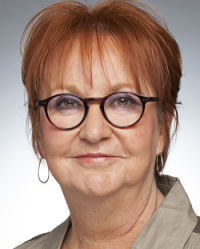 The market for commercial insurance was soft in 2016 for the third year in a row, and the buyer's market should continue into this year, according to the recently released RIMS Benchmark Survey.
The market for commercial insurance was soft in 2016 for the third year in a row, and the buyer's market should continue into this year, according to the recently released RIMS Benchmark Survey.
The RIMS survey, which was compiled in conjunction with consultancy Advisen, cited declines across all lines of coverage except for total fidelity, surety, and crime costs. It showed that the total cost of risk per $1,000 of company revenue dropped 5% last year to $10.07, from $10.55 in 2015. That follows declines in the total cost of risk of 2% in 2015 and 1% in 2014.
The survey, based on responses from 759 organizations, shows property insurance costs declined 8% as a portion of the total cost of risk, while liability costs were down 5% and workers compensation costs slid 6%.
The report noted that expected increases in rates for certain lines of coverage, such as cyber, errors and omissions, and workers compensation coverage, failed to materialize in 2016.
Looking ahead to this year, the RIMS report cites predictions that property and most liability lines will be flat to 10% lower.
Steven Weisbart, senior vice president and chief economist at the Insurance Information Institute, said that on the demand side, the economy's moderate rate of growth, the modest pace at which companies are investing in new plants and equipment, and the fact that the U.S. is near full employment, suggesting hiring will expand more slowly going forward, all point to “a pretty modest expansion of the demand for insurance.”
On the supply side of the equation, capital has been pouring into the insurance market, in part because of a scarcity of other appealing options. But that interest in putting money to work in insurance could change if economic growth gains steam, Weisbart said. “If the global economy starts moving along at a faster clip, it's entirely possible that capital will be withdrawn from the U.S., especially the insurance sector, and be redeployed elsewhere, raising rates and lessening the willingness to supply insurance at lower rates.”
Having said that, “if nothing changes, then yes, it looks as if the market will remain fairly soft,” he said.
Weisbart cited an increase in interest rates as as one factor that could have an effect on insurance pricing. Higher rates might create other investment opportunities, siphoning off some of the capital now deployed in the insurance industry, he said. Higher rates could also give insurers a boost by increasing the investment income they receive from their portfolios.
A recent report from insurance brokerage Lockton Companies suggests that commercial insurance prices remained soft during the first quarter of this year.
“By and large the market has stayed very competitive, and we don't see any major forces that are going to change that in the next six to 12 months,” said Mark Moitoso, senior vice president and analytics practice leader at Lockton. “There's been a lot of new entrants into the marketplace, companies that have expanded appetite.”
And despite the soft market conditions, “the combined ratios and the results for the industry have performed very well,” he said.
A huge natural disaster that inflicted major losses on carriers could shift the market, but Moitoso pointed out that Hurricane Matthew last fall failed to affect pricing. Moreover, the U.S. experienced a great number of weather problems during the first quarter of this year, including storms and snow and ice events, but “we're doing renewals every day and we don't see that changing the behavior or course at this point in time,” he said.
Moitoso pointed to commercial auto as one line of coverage that remains challenging. Lockton's report notes that frequency and severity rates for commercial auto coverage have been increasing rapidly.
He argued that going forward, insurance pricing is likely to be less volatile than it has been in the past, because of markets' increased transparency and because insurance companies use analytics and modeling in their underwriting.
“The industry has been so accustomed to these major peaks and major valleys over underwriting cycles,” Moitoso said. “The highs are never going to get as high and the lows are never going to get as low.”
Risk Managers' Perspective
Declining prices sound like a buyer's dream come true, but risk managers say they still have their work cut out for them.
 “As a buyer, it shouldn't change your thought process,” said Carolyn Snow, director of risk management at Humana Inc. and a past president of RIMS. “You should still present yourself and plan in the same way as if it were a hard market.
“As a buyer, it shouldn't change your thought process,” said Carolyn Snow, director of risk management at Humana Inc. and a past president of RIMS. “You should still present yourself and plan in the same way as if it were a hard market.
“You should always go into it with the approach that you're selling your account,” explained Snow, pictured at left. “You need to position your account as best in class, if you will. You want to position yourself as being the best because you're competing for surplus, the best quotes or the best coverage.”
She acknowledged, though, that lower rates can make negotiating easier. “When there is a lot of capacity in the market, then you know as a buyer that you have more choices,” Snow said “You can be more selective, and maybe you can engineer a better coverage—'I'm OK with the premiums, but I'd like some improvement, I'd like the sublimits better.'”
The savings realized in renewal negotiations during a soft market might allow the risk manager to expand the company's coverage or else provide the company with the savings.
“You can look at it and say this is the opportunity we have to buy higher limits on certain coverages, or to expand and buy a new coverage, such as cyber insurance, if you haven't bought that before,” said Gloria Brosius, director of risk management and insurance at Pinnacle Agriculture Holdings and a member of the RIMS board of directors.
“You have to consider where the company sits financially, if they're only looking for cost savings or if they're looking for expansion as well,” Brosius added. “A good risk manager is offering both options—we can save, or we can expand our coverages or buy this new policy. It definitely gives us options.”
“You really can't take your eye off the ball in a soft market,” Snow said, “but it does give you the opportunity to enhance your overall program, maybe enhance your coverage in some areas.”
© 2025 ALM Global, LLC, All Rights Reserved. Request academic re-use from www.copyright.com. All other uses, submit a request to [email protected]. For more information visit Asset & Logo Licensing.




